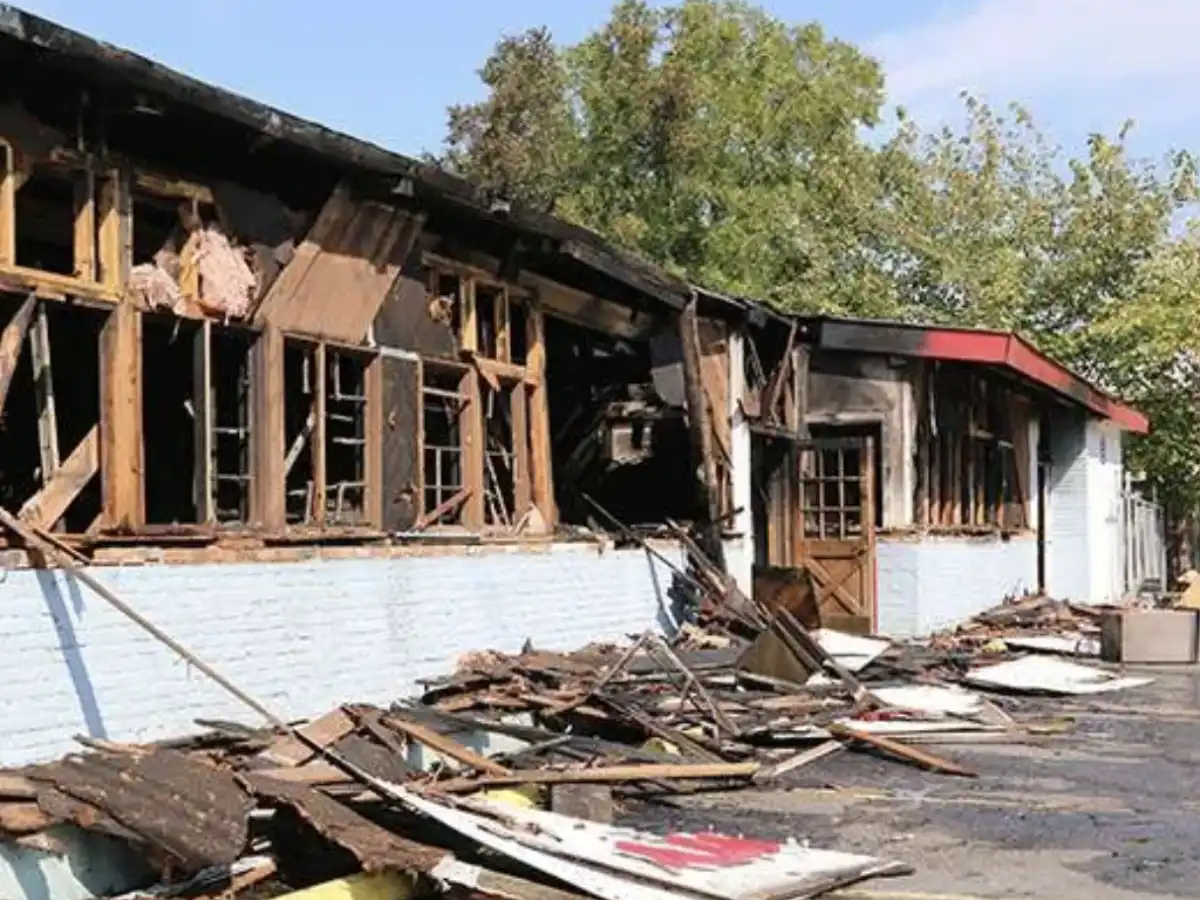States we serve: VA, MD, DC, PA, NC, SC, and WV
Prepare for Disaster with Business Interruption Insurance
January 22, 2023 · 4 minute read

Have questions?
Contact us today.
Please note: coverage cannot be bound or altered online. A service representative will need to contact you to finalize your request.
Have you considered how you would manage if a fire or other disaster damaged your business premises? To quickly resume business after a disaster, business interruption insurance is key. Here are a few things you should know about this essential coverage:
- Business interruption insurance makes it possible for you to quickly resume business activities in the event of a disaster.
- Business interruption typically covers loss of income and continued business operation expenses.
- There is generally a 48-hour waiting period after the loss before coverage is effective.
There are typically three types of business interruption insurance.*
- Business Income Coverage. This coverage will compensate you for lost income if your business suffers a property loss or damage from a covered peril such as windstorm or fire. Your business will be covered, after a brief waiting period, until restoration of the lost or damaged property is complete. In addition, the policy will cover operating expenses, such as utilities, that continue even when your business has temporarily halted activity.
- Extra Expense Coverage. During the restoration period following a loss, you may incur extra expenses to keep your business operating. Extra expense coverage reimburses your company for a reasonable sum of money that it spends over and above the normal operating expenses to avoid having to shut down during the restoration period. Extra expense coverage may also cover payroll to key employees so that you may retain them as employees.
- Contingent Business Interruption Insurance. This policy will reimburse your company for its expenses and lost profits when it can’t operate because a disaster has struck a supplier or manufacturer. For example, a massive earthquake and tsunami that occurs in Japan will lead to supply chain disruptions around the world. Companies who are affected by a supply chain disruption of this nature can use this coverage to reimburse expenses and lost profits during any resulting shipment delays.
Think about the amount of time you will need to get your business back up and running, and consult with your agent to make sure your limits are sufficient.
Implementing a Business Recovery Plan
In addition to securing business interruption insurance, it is important to have a plan in place to execute the recovery of your business in the event of a disaster. Here are some tips for developing a plan:
Client Retention Plan. Decide on a communications strategy to prevent loss of customers. Post notices outside your premises; contact clients by phone, e-mail, or regular mail; place a notice on your website, on your social media profiles, and in local newspapers.
Back-up Resources. Consider the resources you may need during an emergency. Do you need a back-up source of power? Do you have a back-up communications system?
Keep Duplicate Records. Keep copies of the following information in a safe deposit box or off-site location:
- A list of all employees, key customers, and vendors, along with contact numbers.
- Insurance policies and agent contact information.
- Back-up of electronic data.
- Inventories of equipment, computer software/hardware, and furniture.
- A list of emergency vendors, like plumbers and restoration contractors.
- Copies of essential business policies, plans, and agreements.
- Photographs of the business and assets, both inside and out.
Business-to-Business Coordination. Even if your business escapes the physical damage of a disaster, your operations may suffer significant losses due to the inability of suppliers to deliver goods or services or from a reduction in customers. Communicate with your suppliers and markets (especially if they are selling to a business as a supplier) about their disaster preparedness and recovery plans so everyone is prepared.
Protect Your Building. Conduct regular inspections of your business property to identify potential hazards. Look for signs of defective electrical wiring, leaky gas connections, and structural defects. By identifying hazards ahead of time and making necessary repairs, you can reduce the threat of injury or death and minimize property damage in the event of a disaster.
Continued Business Activity. Identify critical business activities and the resources needed to support them. If you cannot afford to shut down your operations, even temporarily, determine what you would require to run the business at another location.
For guidance on generating your business recovery plan, check out the Business Recovery Checklist at www.fema.gov.
*Note: Damage due to flood is excluded from most property policies.
Reference: www.iii.org




